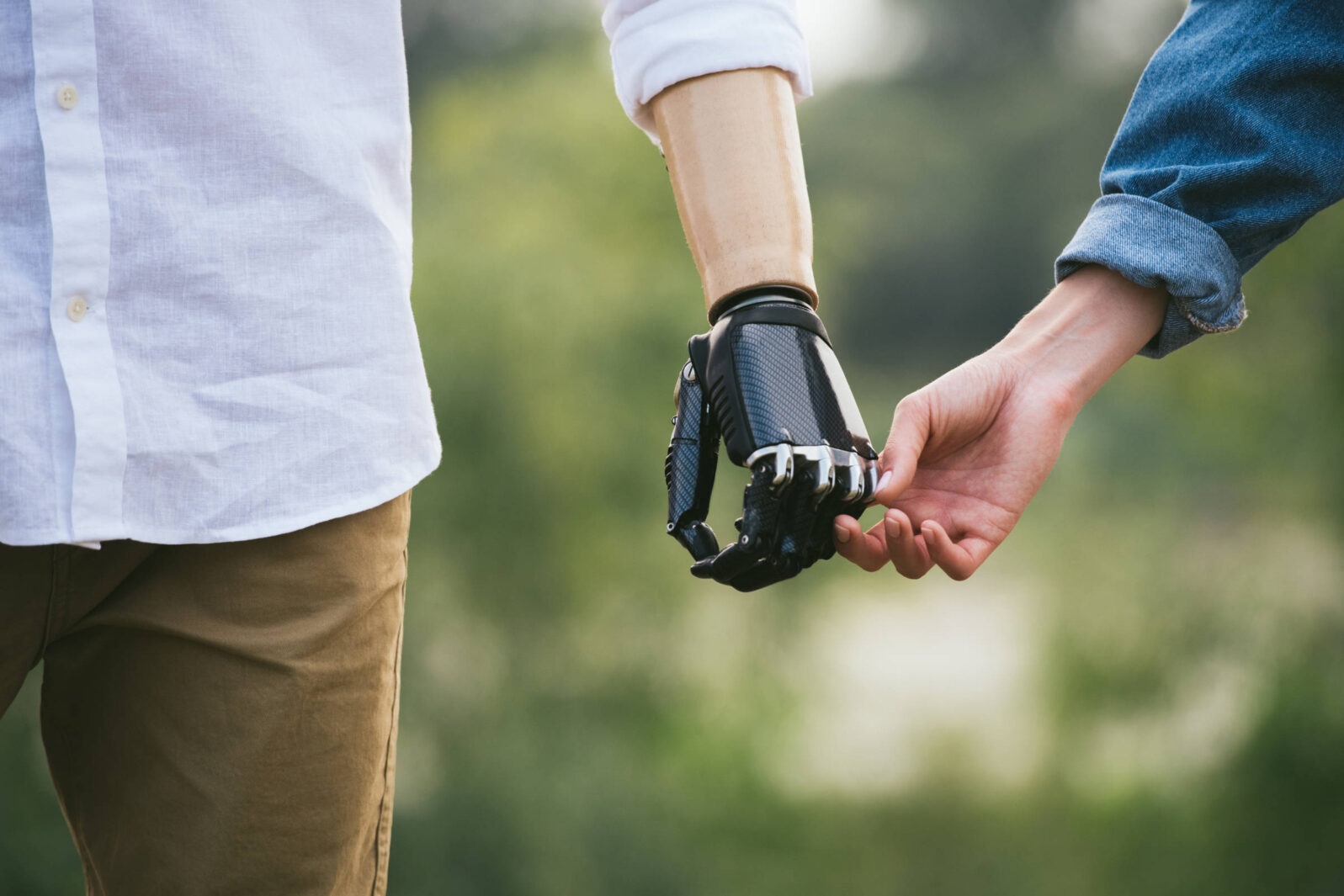Prosthetic Hand Controlled by Thoughts Alone? It’s Here.
Decades ago, no one could control a prosthesis only by thought. There is lots of room for the field to grow stillAnd it’s getting better. A key problem for amputees is that the nerves in the remaining part of a limb used to control a prosthesis usually produce only tiny signals. They are often hard for the nervous system to distinguish from mere noise. So, to control the limb by thoughts, the signals must be amplified. A new technique uses muscle grafts to amplify the signals:
In a study published this week (March 4) in Science Translational Medicine, researchers describe a strategy that creates a so-called regenerative peripheral nerve interface using muscle grafts connected to amputees’ remaining peripheral nerves. The grafts amplify signals that, when the patients think of moving their hands or fingers, are conveyed through wires to a robotic prosthesis. In the trial’s four subjects, the prosthetics worked for up to 300 days without the need for recalibration.
Just by thinking about it, both subjects could do all the tasks with more than 94 percent accuracy on the first day they tried it.
Abby Olena, “Patients Try Most Intuitive Hand Prosthetics Yet in Pilot Trial” at The Scientist
The muscles that form the regenerative peripheral nerve interface (RPNI) are taken from the patient’s thigh and wrapped around a peripheral nerve whose axons have been teased apart. The nerve cells take about three months to grow into the muscle graft, causing it to contract when an electrical signal is received. The contractions cause large enough signals to the brain to be useful in controlling the prosthesis. The object of the surgery is to integrate the prosthesis as fully as possible with the nervous system.
The human nervous system can work with electronic signals from machines; the principal need is for effective enough translation that a prosthesis can help the user do normal tasks efficiently. Last year, it was reported that six totally blind people enjoyed partially restoration of vision via a device that bypasses damaged optic nerves and feeds camera images directly into their brains:
In another recent advance, University of Utah researchers re-engineered a prosthetic hand so that an amputee could control the device with his thoughts and “feel a wide range of sensations, helping him physically grasp a variety of delicate objects, from a glass of wine to a single grape.
News, “High tech can help the blind see and amputees feel” at Mind Matters News
The long-term goal is “ to build prostheses that amputees and those with paralysis can control with their thoughts” in a conventionally functional way. But one constraint is the sheer volume of nervous system signals, which adds up to many hours of researcher time for small gains. Some researchers are working on a way around that problem using statistical analysis:
Each time a neuron fires it sends an electrical signal—known as a “spike”—to the next neuron down the line. It’s the sort of intercellular communication that turns a notion in the mind into muscle contraction elsewhere in the body. “Each neuron has its own electrical fingerprint and no two are identical,” says Eric Trautmann, a postdoctoral researcher in Shenoy’s lab and first author of the paper. “We spend a lot of time isolating and studying the activity of individual neurons.”
Neuroscientists call that process “spike sorting,” and it must be done for every neuron in every experiment, an endeavor that eats up many thousands of hours of researcher time each year and is only going to get more time consuming as scientists build implants with greater numbers of electrodes. Indeed, researchers estimate that sensors will have 1,000 or more electrodes—up from 100 today—at which point, it would take a neuroscientist 100 hours or more to sort the spikes by hand for every experiment.
Andrew Myers, Stanford University, “Could prosthetic limbs one day be controlled by human thought?” at MedicalXpress
Will a prosthetic limb ever seem fully natural to the wearer? Realistically, most amputees would settle for more fluid movements. There’s even a new word for it, “fluidifying” the relationship between the wearer and the device. Decades ago, no one could control a prosthesis only by thought. There is lots of room for the field to grow still.
Papers: P.P. Vu et al., “A regenerative peripheral nerve interface allows real-time control of an artificial hand in upper limb amputees,” Science Translational Medicine, doi:10.1126/scitranslmed.aay2857, 2020. (paywall)
and
Eric M. Trautmann et al. Accurate Estimation of Neural Population Dynamics without Spike Sorting, Neuron (2019). DOI: 10.1016/j.neuron.2019.05.003
Further reading: High tech can help the blind see and amputees feel. It’s not a miracle; the human nervous system can work with electronic information.
